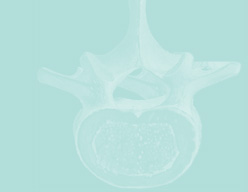page [1] [2] [3] [4] [5] [6] [7] [8]


Back pain is caused by a wide and heterogeneous range of specific diseases and nonspecific musculoskeletal disorders involving the spinal column. Pain complaints involving the neck and back are the primary manifestation of most spinal disorders. Specific etiologies of pain-causing spinal disorders are classified as traumatic, congenital, infectious, metabolic, and malignant. Acute traumatic spinal disorders are most often fractures resulting in spinal cord injury, dislocation, and spinal dysfunction. Chronic spinal disorders from repetitive intervertebral disk trauma are frequently due to focal extension of the disk beyond the vertebral endplate, resulting in radicular symptoms because of nerve compromise. Spinal infection may be a sequel of vertebral osteomyelitis (pyogenic, granulomatous, or other infectious process), epidural abscess, or inflammation of the intervertebral disk. While these spinal disorders are rare in most countries, without appropriate treatment both mortality and morbity are significant. Congenital abnormalities include spondylolisthesis, spina bifida, scoliosis, and other malformations. Spinal disorders may be the result of metabolic disease processes including osteoarthritis, osteoporosis, osteomalacia, and osteitis deformans. Tumor-induced spinal disorders can arise from metastases, primary malignant tumors (chordoma, myeloma), and benign tumors (osteoid osteoma, osteoblastoma, osteochondroma). Immunologic diseases affecting the spine include rheumatoid arthritis, ankylosing spondylitis, Reiter syndrome, and psoriatic arthritis. Pain-causing musculoskeletal disorders of the spine are classified as nonspecific if no underlying disease (e.g. ankylosing spondylitis) or pathophysiological mechanism (e.g. trauma, malignancy, disk herniation) is identified by simple clinical means (clinical examination, radiological studies, and basic laboratory tests). These nonspecific musculoskeletal conditions are by far the most frequent causes of spinal disorders and have the greatest impact on individuals, health care systems and societies as a whole. It is of note that even after extensive evaluation, only 15% of the patients presenting with acute low back problems can be given a definitive diagnosis. Spinal disorders are classified as acute (less than 1 month) or subacute (up to 3 months) if they occur suddenly after a prolonged period without pain (6 months) and with a retrospective duration of less than 1–3 months. These disorders are categorized as chronic if they occur episodically within a 6-month period or have a duration of more than 3 months. Usually, these painful disorders of the spine are accompanied by other musculoskeletal pains, bodily complaints, psychological distress, and often, in chronic cases, amplified dysfunctional cognition and pain behavior. The etiology of nonspecific spinal disorders is generally difficult to ascertain due to the low specificity of physical signs and symptoms.
| page [1] [2] [3] [4] [5] [6] [7] [8] >> next |